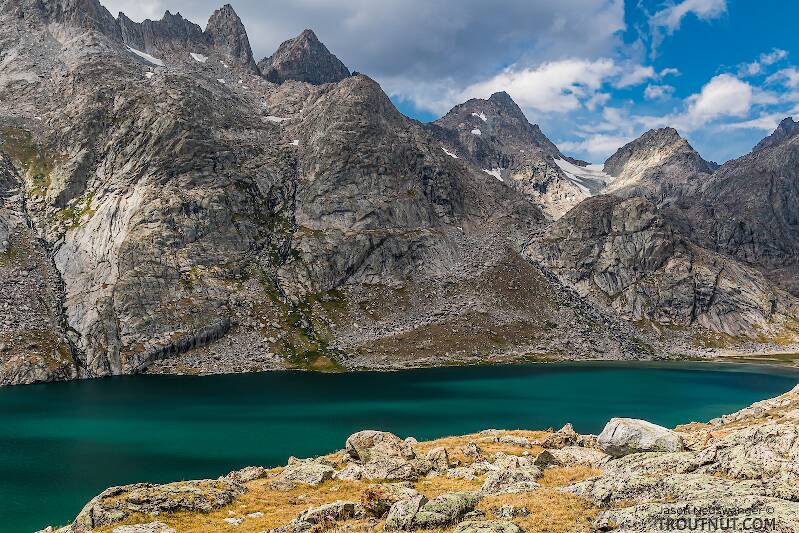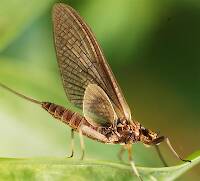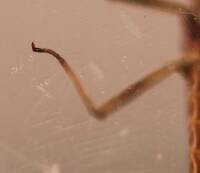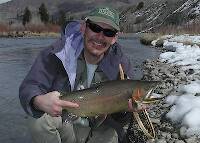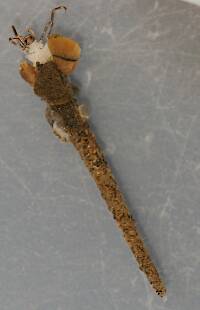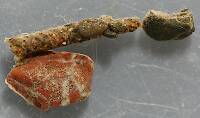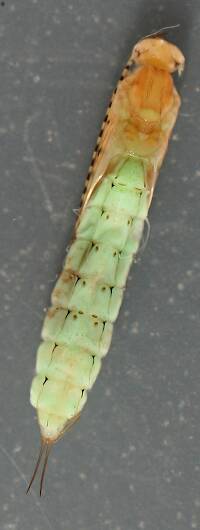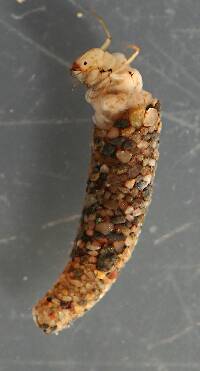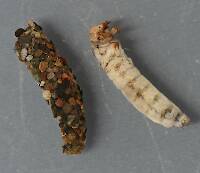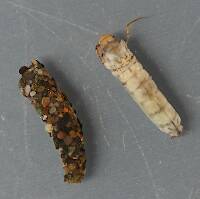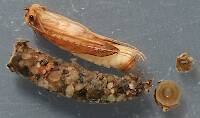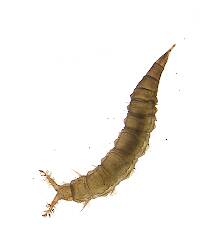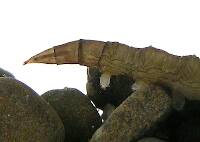
Hex Mayflies
Hexagenia limbata
The famous nocturnal Hex hatch of the Midwest (and a few other lucky locations) stirs to the surface mythically large brown trout that only touch streamers for the rest of the year.
Featured on the forum

As far as I can tell, this species has only previously been reported from one site in Oregon along the Columbia gorge. However, the key characteristics are fairly unmistakable in all except for one minor detail:
— 4 small yellow spots on frons visible in photos
— Narrow occipital spinule row curves forward (but doesn’t quite meet on stem of ecdysial suture, as it's supposed to in this species)
— Short spinules on anterior margin of front legs
— Short rposterior row of blunt spinules on abdominal tergae, rather than elongated spinules dorsally
I caught several of these mature nymphs in the fishless, tiny headwaters of a creek high in the Wenatchee Mountains.
— 4 small yellow spots on frons visible in photos
— Narrow occipital spinule row curves forward (but doesn’t quite meet on stem of ecdysial suture, as it's supposed to in this species)
— Short spinules on anterior margin of front legs
— Short rposterior row of blunt spinules on abdominal tergae, rather than elongated spinules dorsally
I caught several of these mature nymphs in the fishless, tiny headwaters of a creek high in the Wenatchee Mountains.

Troutnut is a project started in 2003 by salmonid ecologist Jason "Troutnut" Neuswanger to help anglers and
fly tyers unabashedly embrace the entomological side of the sport. Learn more about Troutnut or
support the project for an enhanced experience here.
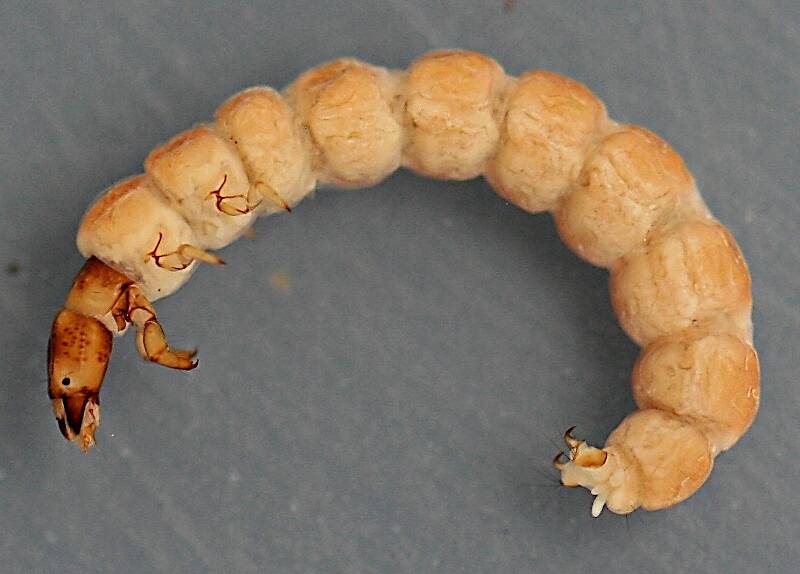
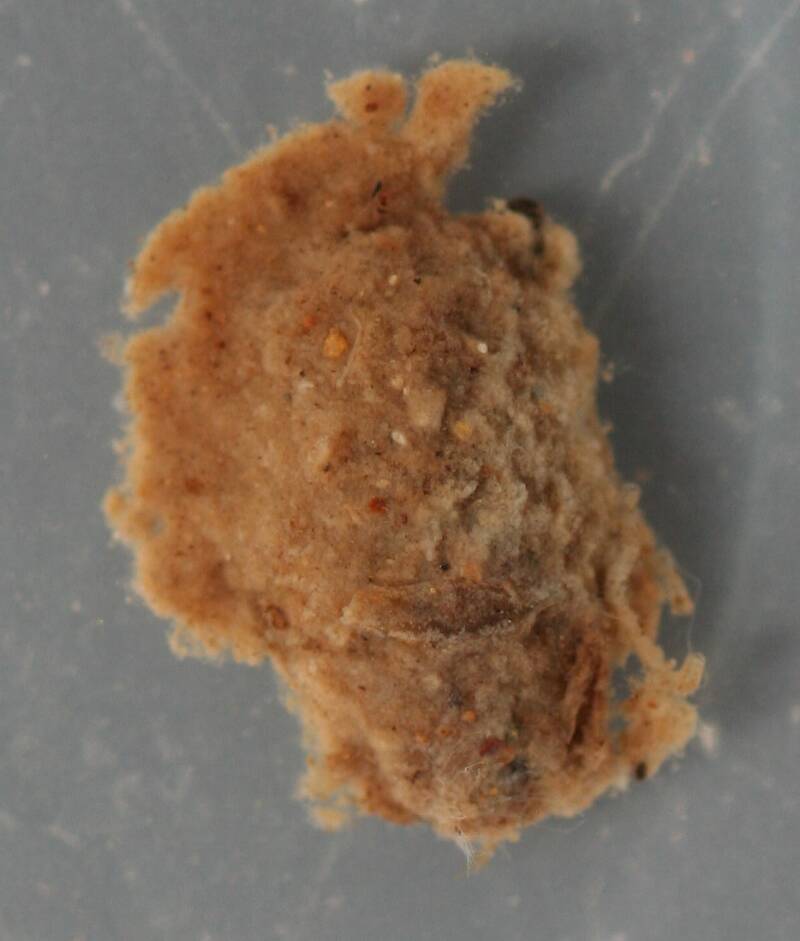
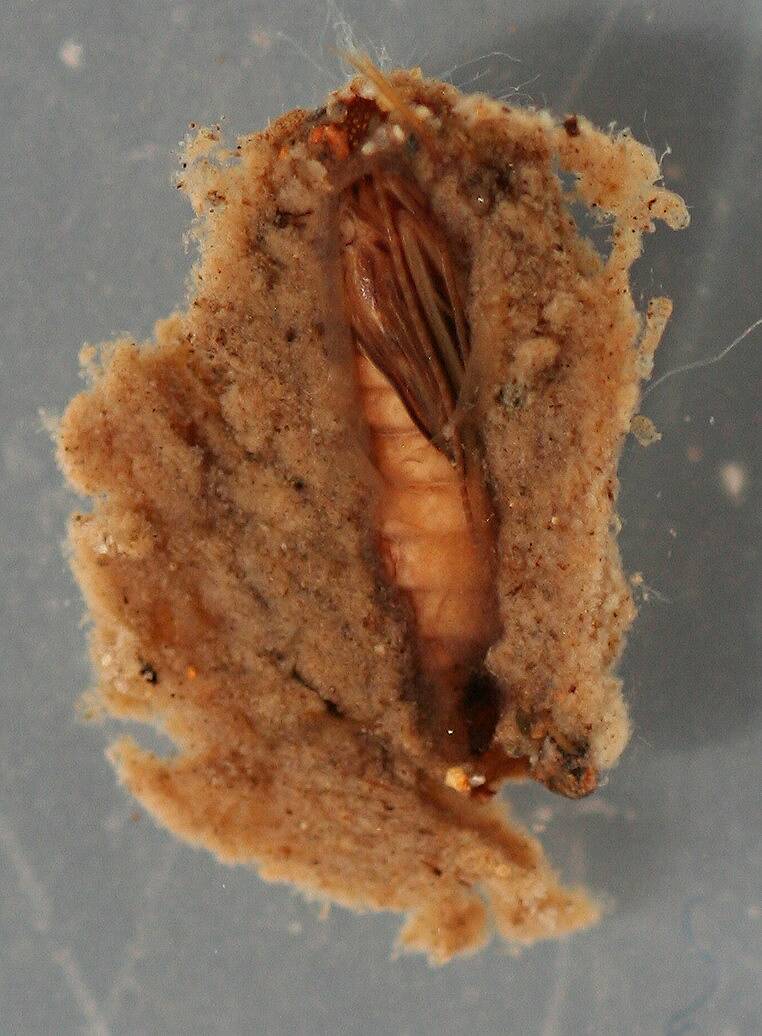

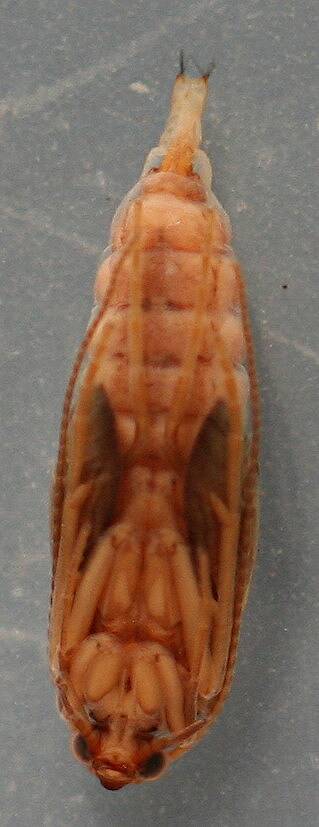

Millcreek on Feb 24, 2015February 24th, 2015, 5:48 am EST
These are relatively common in Mill Creek, a tributary of the Russian River.
They're found in pools on the side and top of rocks. They use a net to capture diatoms and algae. The net sits flat on the rock usually over a small declivity.
When ready to pupate, the larva leaves the net and finds a large rock, spins a covering of silk and sand and begins pupation. Pupae are usually found on the top or side of a rock.
They're found in pools on the side and top of rocks. They use a net to capture diatoms and algae. The net sits flat on the rock usually over a small declivity.
When ready to pupate, the larva leaves the net and finds a large rock, spins a covering of silk and sand and begins pupation. Pupae are usually found on the top or side of a rock.
"If we knew what it was we were doing, it would not be called research, would it?"
-Albert Einstein
-Albert Einstein
Creno on Feb 24, 2015February 24th, 2015, 8:30 am EST
Nice pics - especially pupal stuff - can you get a close up of the head showing the structure (bump) between the antennae? Does that hang over the front of the head like a ball-cap brim?
Millcreek on Feb 24, 2015February 24th, 2015, 9:45 am EST
Kind of pressed for time right now. Will try to get pics of the head later.
Did take a look under the microscope and it does to appear hang over the front of the head.
Did take a look under the microscope and it does to appear hang over the front of the head.
"If we knew what it was we were doing, it would not be called research, would it?"
-Albert Einstein
-Albert Einstein
PaulRoberts on Feb 24, 2015February 24th, 2015, 4:31 pm EST
Nice. Thanks for these.
Quick Reply
Related Discussions
Topic
Replies
Last Reply
4
Dec 9, 2006
by DMM
by DMM
9
Jul 7, 2015
by Millcreek
by Millcreek

